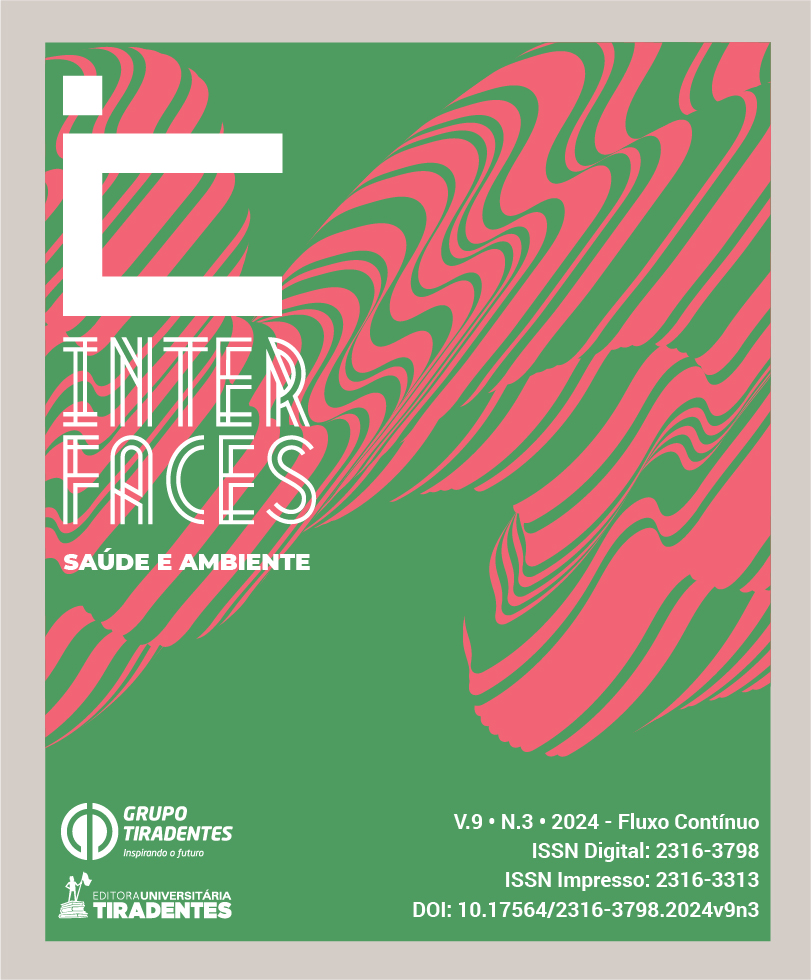FARINHA DO PEDÚNCULO DE CAJU (Anacardium occidentale L.) COMO ALTERNATIVA SUSTENTÁVEL: ELABORAÇÃO E ACEITABILIDADE DE BISCOITOS
preparation and acceptability of cookies
DOI:
https://doi.org/10.17564/2316-3798.2024v9n3p242-256Publicado
Downloads
Downloads
Edição
Seção
Licença
Copyright (c) 2024 Interfaces Científicas - Saúde e Ambiente

Este trabalho está licenciado sob uma licença Creative Commons Attribution-NonCommercial 4.0 International License.
Autores que publicam nesta revista concordam com os seguintes termos:
a. Autores mantêm os direitos autorais e concedem à revista o direito de primeira publicação, com o trabalho simultaneamente licenciado sob a Licença Creative Commons Attribution que permite o compartilhamento do trabalho com reconhecimento da autoria e publicação inicial nesta revista.
b. Autores têm permissão e são estimulados a distribuir seu trabalho on-line (ex.: em repositórios institucionais ou na sua página pessoal), já que isso pode gerar aumento o impacto e a citação do trabalho publicado (Veja O Efeito do Acesso Livre).
Resumo
O pedúnculo de caju é uma fonte potencial de nutrientes e compostos bioativos desperdiçada no ciclo produtivo. O uso do pseudofruto como farinha de caju, mostra-se promissor ao substituir a farinha de trigo em itens como biscoitos. Objetivou-se obter uma farinha do pedúnculo de caju para elaboração de biscoitos tipo cookies como alternativa sustentável para alimentação humana. A farinha de caju foi misturada à farinha de trigo, nos níveis de 50% (Biscoito A), 75% (Biscoito B) e 80% (Biscoito C) para elaboração da massa de biscoito. Os produtos foram submetidos à avaliação sensorial (escala hedônica de aceitação, preferência e intenção de compra). Os atributos sensoriais avaliados foram textura, aroma, maciez, sabor, doçura, aparência, cor e qualidade global por 76 provadores não treinados. Os dados foram analisados no software Stata® versão 14.0 (p<0,05). Na análise sensorial, a avaliação “gostei moderadamente” predominou para o biscoito A; o “gostei ligeiramente” para o biscoito B, enquanto o biscoito C alternou médias referentes ao “gostei ligeiramente” e “gostei moderadamente”. O atributo sabor apresentou diferença significante entre os biscoitos, com maior média para o biscoito A (p=0,0114). Quanto ao índice de aceitação global, as três formulações apresentaram percentual >75% (biscoito A: 81,01%; biscoito B: 76,37% e biscoito C: 78,05%). A maioria compraria os três tipos de biscoitos, com predominância do biscoito A, o qual teve 56,58% de preferência. Assim, os biscoitos apresentaram boa aceitabilidade e o conhecimento acerca dos benefícios nutricionais da farinha de caju, coloca-a como uma boa alternativa alimentar, sendo saudável e sustentável.




















